When you think of flour, what comes to mind? Cassava flour, part of our indigenous heritage, especially the famous “baguda” [big-grain flour] from Bragança, in Pará? Or wheat flour, used in pasta and baked goods? Well, now we can think about - and consume - other types of flour, produced with raw materials typical of the Amazon region.
Not only are rural producers investing in elaborating these flours, but also are researchers delving into the nutritional benefits of those made from pupunha or yam, for example.
The Bragantina Network of Knowledge and Flavors – a collective that brings together farmers, associations, and cooperatives from eleven municipalities in northeast Pará, one in Maranhão, and one in Amapá –, sells these special flours, all gluten-free. In addition to pupunha and purple and white yam, the ingredients include tucumã, banana, and arrowroot, traditionally consumed in the Amazon.
“The Rede Bragantina involves 2,135 families who cultivate agroecological food systems and manage products from sociobiodiversity. What is produced by these families is intended for family consumption and the market, whether in natura or processed, packaged, and marketed by the Associação Campo Cidade Transformar, Agregar Valores e Vidas (Atavida) [Countryside City Association Transform, Add Values and Lives], a solidarity economy agroindustry in Santa Luzia do Pará that is part of the Network,” explains Nazaré Ghirardi, an agronomic engineer and advisor to the collective.
CONSUMPTION
The special flours are sold, in Belém, at the Rede Bragantina store in the Pedreira neighborhood. In addition to packages of the flours, the place also offers other products for breakfast, such as the vegetables, either in natura or cooked, and other formulations like porridges, cakes, muffins, and breads made without lactose and from alternative flours that become substitutes for wheat flour.
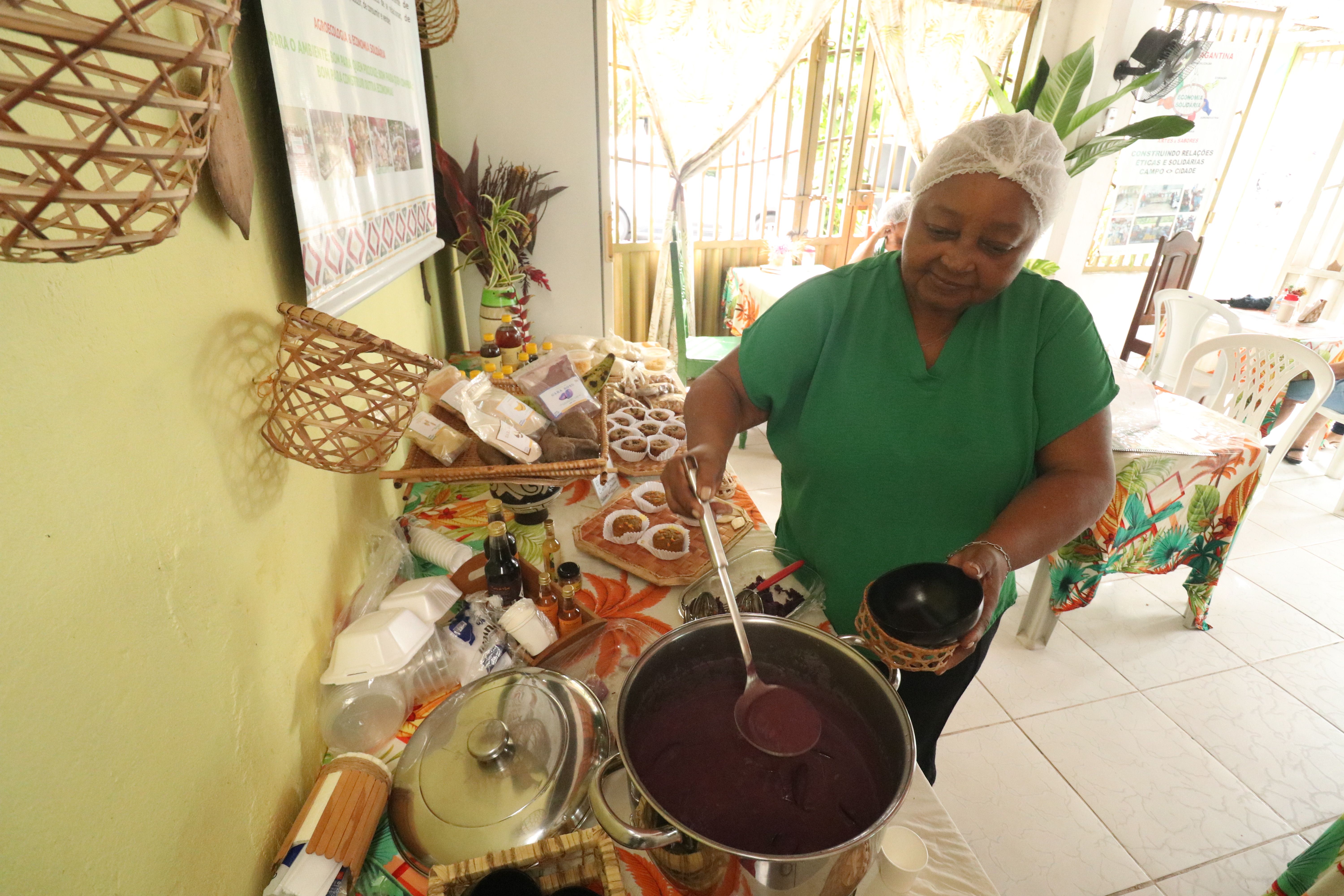
Public servant Inês Silveira frequently visits the store to have coffee and buy organic products sold there. Upon trying the purple yam porridge, made from the flour produced with the tuber, the consumer approved the delicacy. “I think it's delicious. I imagine it has a lot of nutrients, but beyond that, it involves an affective memory. My maternal grandparents were family farmers, and yam was something very present on our table. And today, it's very hard to find this product. Now, with this possibility of having the flour, we're happy because we can take it home. I'll try preparing it at home, especially since I'm lactose intolerant,” she says.
Maria Lúcia Reis is the sales manager of the store and has been part of the Rede Bragantina for fifteen years. Initially, she worked with farmers on field education, bringing the proposal “No burning, no cutting, and no poison” encouraging the agroecological transition. Now, she is responsible for selling the Network's products, in what she calls a “solidarity economy commercialization point.”
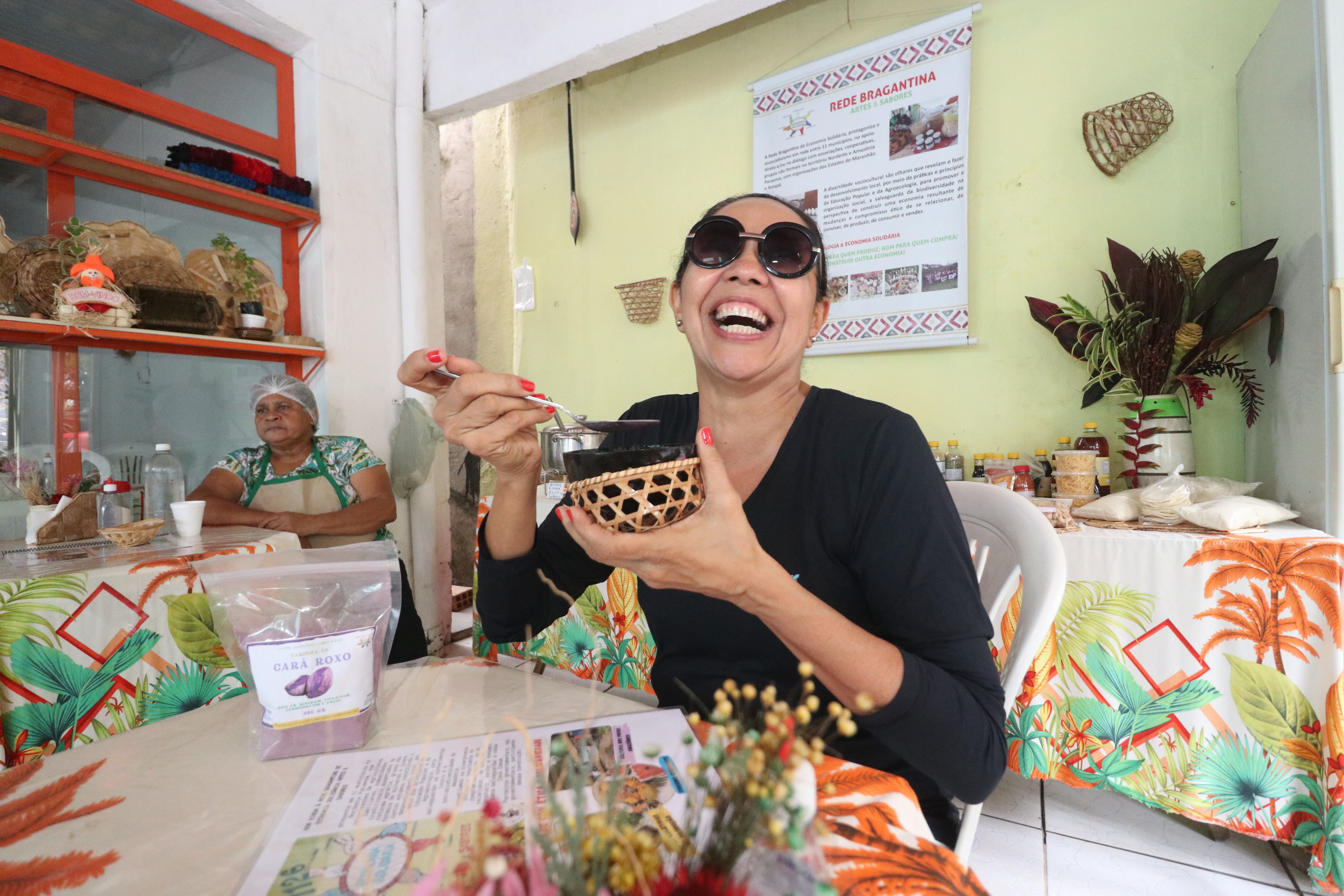
“We have this new proposal, the line of flours that we consider special, originating from fruits and tubers. These products emerged when women from the community themselves sought new income alternatives. There was already a family in the Pimenteira quilombola community, in Santa Luzia, that produced these flours, but they never had visibility. So, agronomist Nazaré helped to boost this project. It was a different look at our biodiversity,” she points out.
“Current generations sometimes don't even know these vegetables. They end up coming to our Biodiversity Counter, on Wednesday mornings, taste them, and like the flavor. And some have childhood memories. These flours are still somewhat novel, but they're becoming better known because we present them when people come here, give them the opportunity to taste, hear the story, and they begin to get interested. We have chefs testing recipes. So, many end up taking them and coming back to buy more. These vegetables are very rich and very versatile,” Lúcia reports. “Our biome is very rich, and we have the commitment to value that,” she adds.
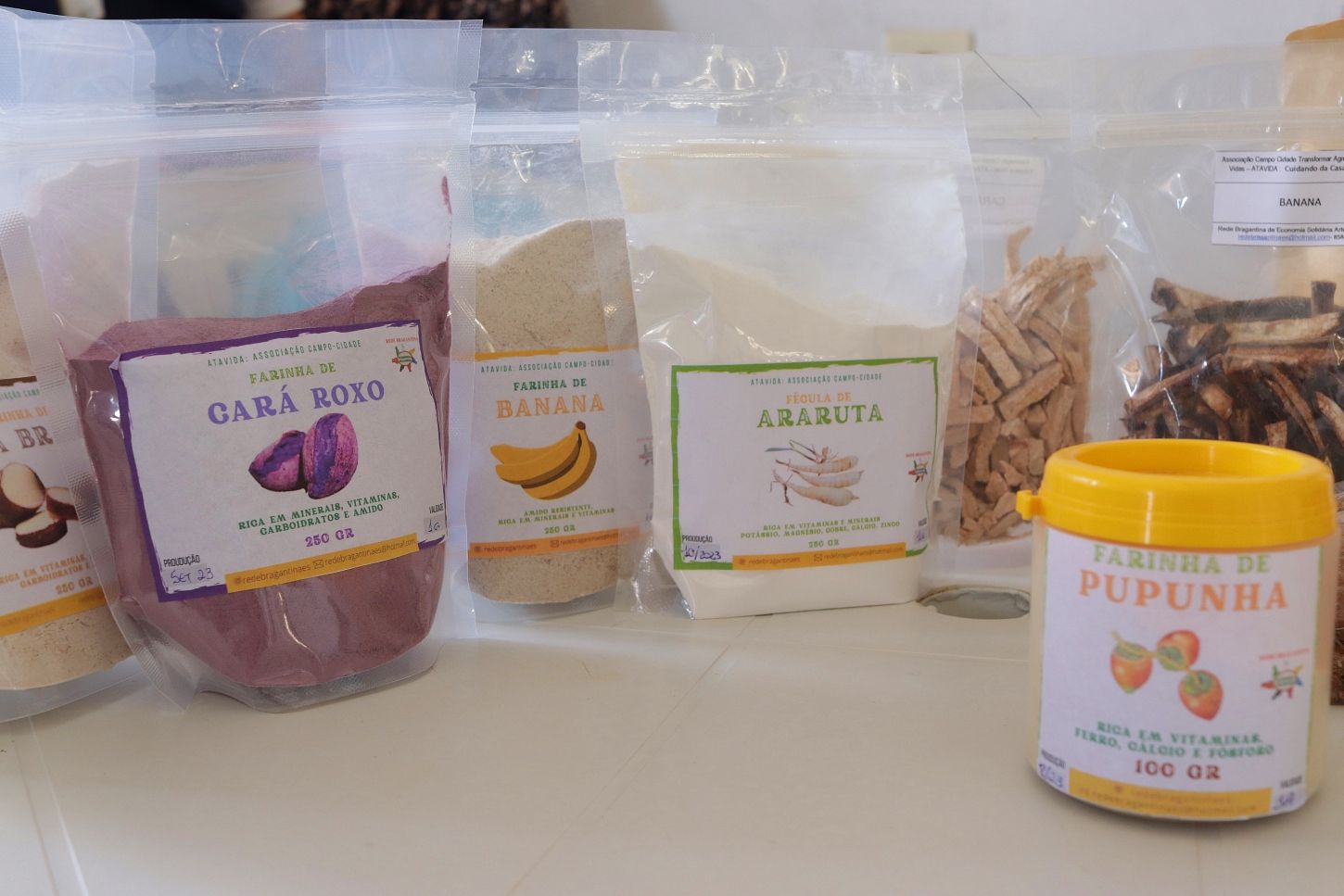
Projeto Quirera, from Embrapa, is a heavyweight help
The Rede Bragantina reckons on a heavyweight help to boost the production and quality of the special flours: the Projeto Quirera, from the Brazilian Agricultural Research Corporation (Embrapa) Eastern Amazon. Coordinated by researcher Laura Abreu, the project assists in implementing adjustments in the production processes of communities in northeast Pará, including some quilombos. The project actions involve listening and collective construction, combining scientific knowledge with traditional knowledge.
“Although the Bragantina region is very well-known for its cassava flour, these flours are of a different type, more like wheat flour, for making breads, cakes, biscuits, porridges, and soups. They are important for certain diets, for people with celiac disease for example, and they are also functional because they have natural antioxidants. In addition to these differentials and their own flavor, they are very rich in fiber. And they promote the recovery of vegetables that were in less use, like purple and white yam,” explains Laura.
PRODUCTIVITY
From dialogue with the communities, solutions were found to improve flour production. “After observing the traditional method that producers used, we proposed adjustments with easier-to-sanitize materials, as well as improvements in the processing steps, like peeling and grinding. We also helped with drying equipment, adapting a dryer already developed by Embrapa to make it easier to maintain, with parts easily found in the local market,” adds Laura.
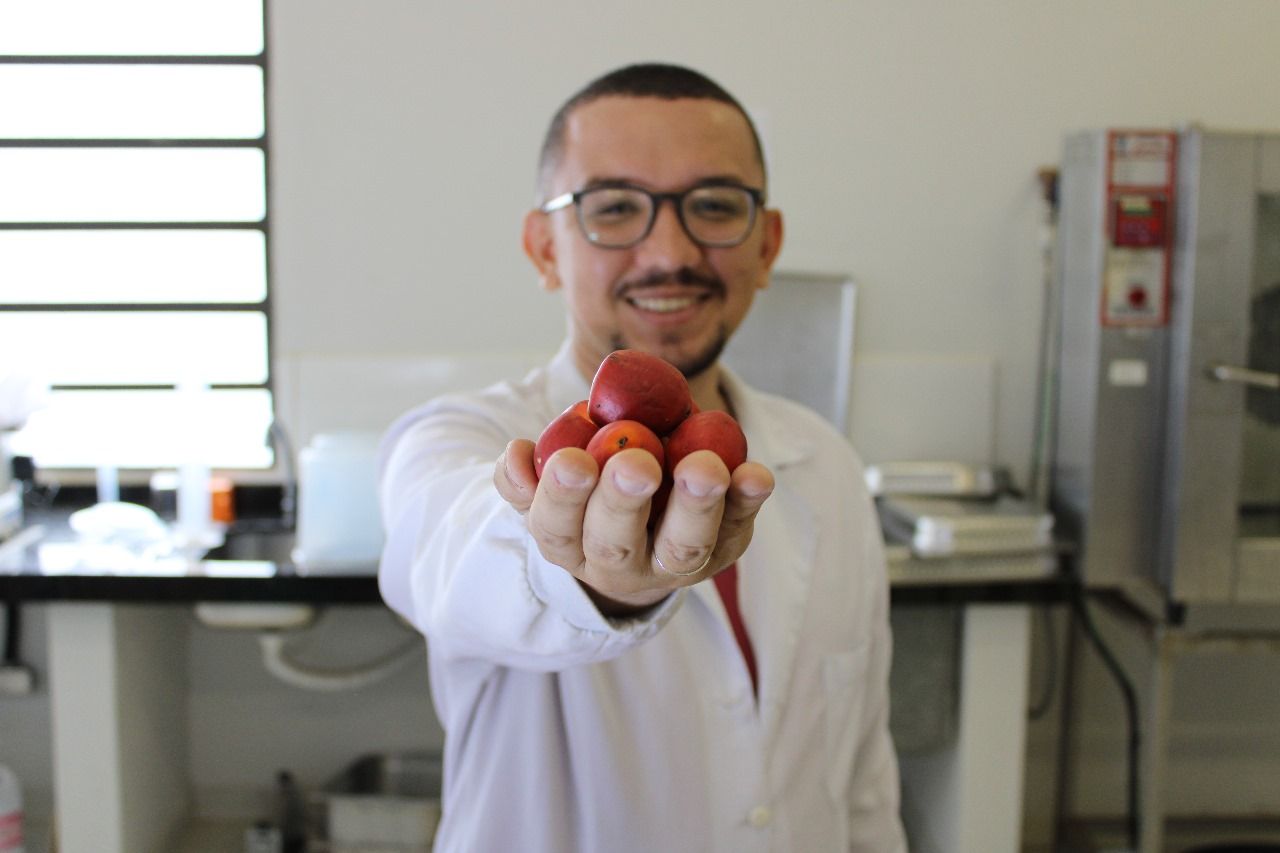
Previously, drying was done in the sun, and during the rainy season, losses were significant. With the adapted dryer, in addition to adopting good practices, losses were halved. Production quadrupled, and product quality increased. Previously, ten kilos of flour were produced per week: today, it's 40 kilos, with hygiene, nutritional quality, and conservation standards.
Researchers assess potential
While Embrapa assists in flour production, Brazilian researchers assess their properties and possible applications. This is the case with Yves Santos, who has been researching pupunha flour since his undergraduate studies. “I was born in Rio Branco, in Acre, and pupunha has always been part of my reality. During harvest season, you can find it on every corner in Rio Branco, but only the fruit, without any processing that allows it to be available at other times of the year. That's why, in my Food Engineering degree at the Federal University of Rondônia [Unir], I studied the characterization of the fruit. Then, in my master's at the University of São Paulo [USP], I focused on using the flour for bakery products, specifically biscuits and cookies,” he recounts.
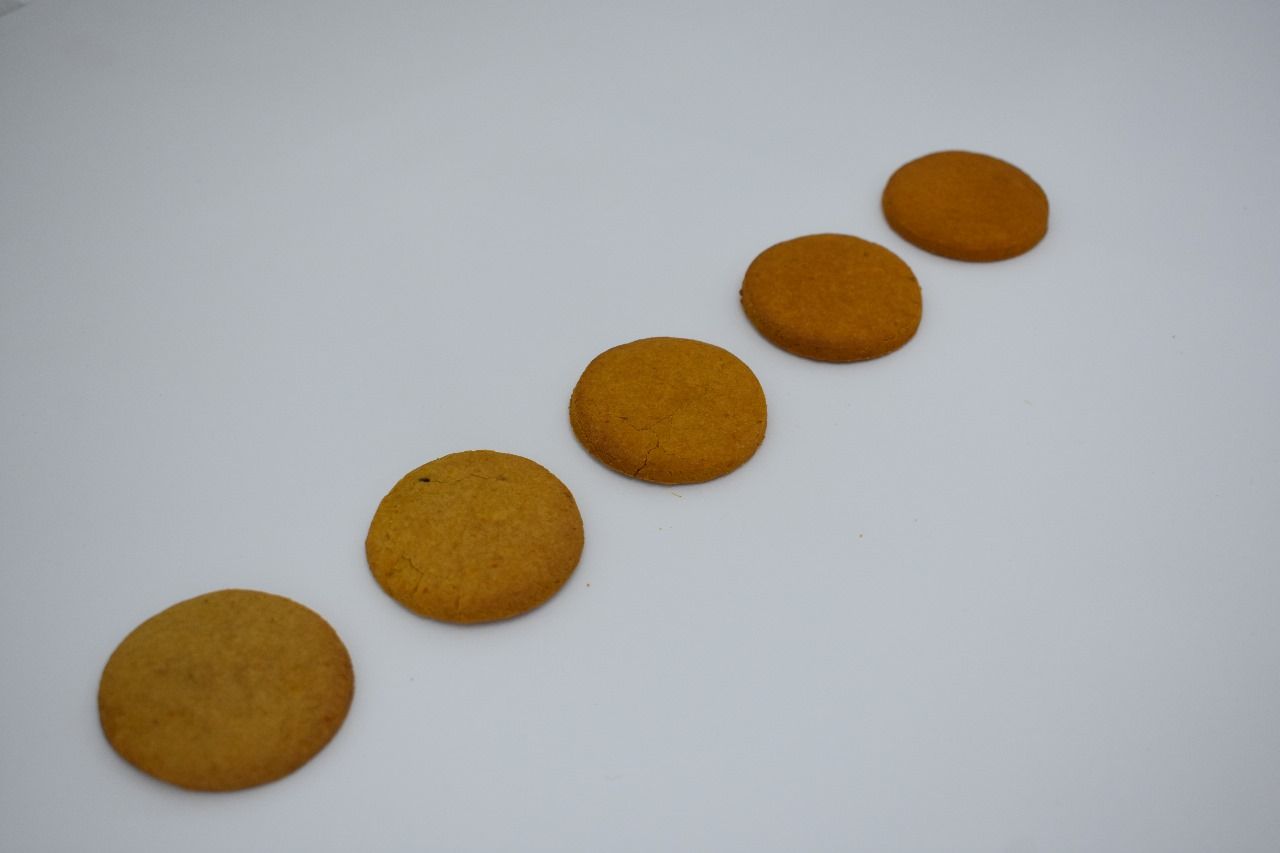
In his master's course, Santos assessed different concentrations of pupunha flour in biscuits, from 12.5%, blended with wheat flour, to 100% pupunha flour, without additives. The researcher also evaluated phenolic compounds in the biscuits, noting a high concentration of these compounds, which have effects against cellular aging. Now, during his doctorate, also at USP, Santos is spending a one-year period researching the product at the University of Genoa, in Italy, studying the application of the flour in dairy products and working with an optimized pupunha flour, with better results than those obtained during the master's course.
For Yves Santos, these properties are advantages over more well-known flours, like wheat and cassava. “It is rich in tannins and carotenoids, which are precursors to vitamin A. It also has a lot of fiber, which can help with gastrointestinal treatment. And pupunha flour makes full use of the fruit, both the pulp and the skin,” he details.
Adding value with pupunha
Ladyslene de Paula, a Food Engineering professor at the Ariquemes campus of the Federal University of Rondônia, also studies pupunha flour. Originally from Goiás, the researcher became interested in the fruit upon arriving in the Amazon region. “I got to know pupunha when I arrived in Ariquemes and realized it was underutilized, despite having high nutritional value. So, I thought about taking this fruit and adding value to it by virtue of industrialization, since it's highly perishable,” explains the professor.

In her studies, the researcher reveals having reached significant nutritional and technological results. “We established optimal drying conditions. We discovered high levels of dietary fiber, lipids, and carotenoids, demonstrating that it's a more nutritious flour compared to others available on the market,” she points out.
So far, cakes, biscuits, cookies, and pasta have been developed. And the flour, being a dry product, increases the product's shelf life. “The more we value this pupunha chain and find more ways to use this flour, the more we benefit family farmers, including in making bakery products. The rural producer themselves can make a bread or pasta and sell it, increasing income generation and making full use of this fruit, so it lasts longer and reaches places beyond the Amazon region,” says the researcher. Currently, Ladyslene and her team are seeking partnerships with companies to produce on an industrial scale and bring the products to market.
Yam is accessible and healthy
Maria Teresa Clerici, a professor at the Food Engineering School of the State University of Campinas (Unicamp), has been studying flours from Brazilian foods for over ten years. More recently, she has turned to studying Amazonian tubers, like purple and white yam. According to her, her research aims to better utilize this Amazonian resource and increase its shelf life.
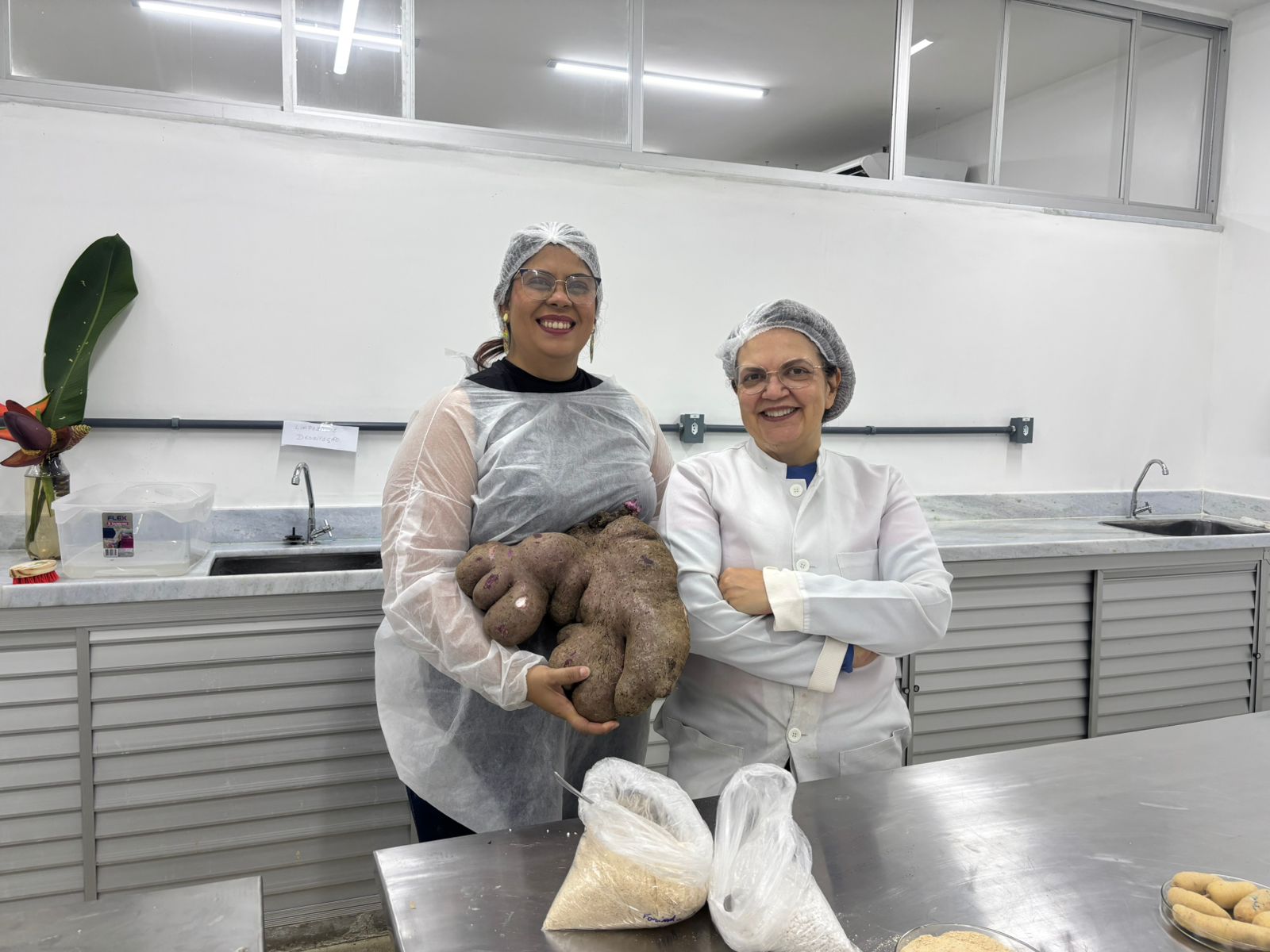
“Yam losses in the region are very high. Sometimes, the price is so low that it's not even harvested. Processing into flours is ideal to ensure harvesting and a better price. We do dehydration, turn it into flour, test it in various food products, and increase the shelf life from six months to a year. We encourage the consumption of regional products, avoiding buying from outside,” highlights the professor.
According to the researcher, yam has benefits such as being a slow-digesting starch, with fibers that provide satiety, and it has many bioactive compounds, like phenolics. “They have a great antioxidant capacity and can replace other energy foods, providing complex carbohydrates and fiber,” she emphasizes. “They are accessible foods for the population, healthy, and can be a source of income for producers,” she adds.
BIOECONOMY
Yves Santos believes in the great potential of the Amazon in terms of food innovations. “As a hardcore Acreano and as a researcher, I see that our region has a wide range of underutilized raw materials which have the power to be applied in existing products or new ones. It's extremely important to value that. When I arrived with the pupunha fruit in São Paulo, many didn't even know what it was. So, showing our diversity is a way of valuing it and strengthening the bioeconomy of the region,” he states.
INSTITUTIONAL PARTNERSHIP
The production of Liberal Amazon is one of the initiatives of the Technical Cooperation Agreement between the Liberal Group and the Federal University of Pará. The articles involving research from UFPA are revised by professionals from the academy. The translation of the content is also provided by the agreement, through the research project ET-Multi: Translation Studies: multifaces and multisemiotics.